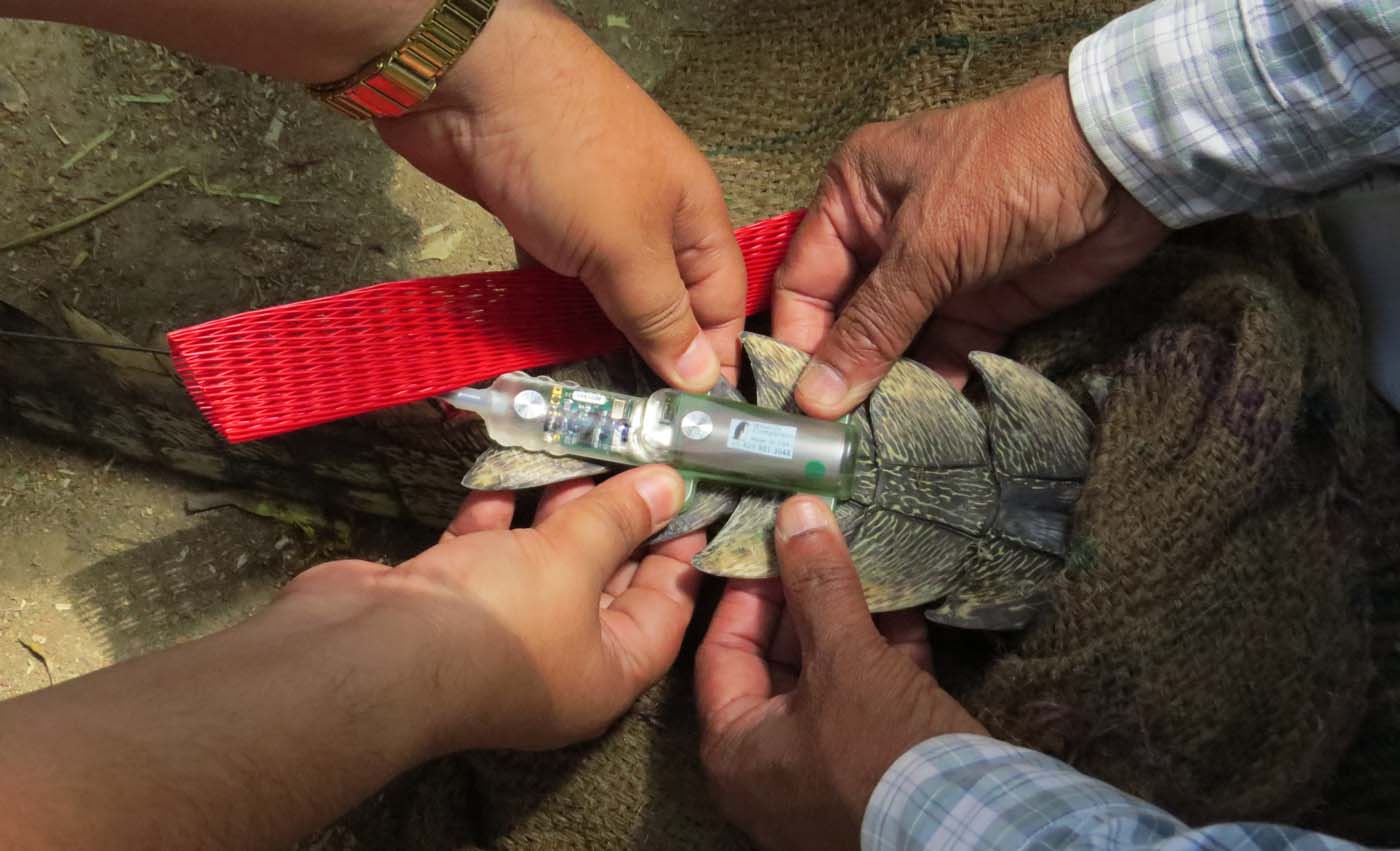Critically Endangered Gharials satellite-tagged, released for restocking
Patna (Bihar), April 19, 2014: Six captive-bred gharials (Gavialis gangeticus) were satellite-tagged and released in the River Gandak, bordering Valmiki Tiger Reserve, Bihar, as part of the restocking of this critically-endangered reptile in the wild. This is the first time ever that gharials have been satellite-tagged. The initiative was undertaken by the Bihar Forest Department in collaboration with Wildlife Trust of India (WTI). The gharials, five females and a male, were sourced from Sanjay Gandhi Biological Park, Patna.
 WTI team satellite-tagging gharial (Gavialis gangeticus) at Sanjay Gandhi Biological Park, Patna.
WTI team satellite-tagging gharial (Gavialis gangeticus) at Sanjay Gandhi Biological Park, Patna.
Photo: Neha Sharma / WTI
Since 1940s, there has been a drastic decline in gharial population, dropping 96% from 5000-10000 individuals to less than 200 in the 1970s (IUCN Red List). The current population stands at less than 200 mature individuals in India and less than 35 in Nepal, and presumably extinct in Pakistan, Bangladesh and Bhutan. The tagging and restocking programme was conceptualised to link the ex situ conservation efforts with that of in situ for this species.
Basheer Ahmad Khan, Principal Chief Conservator of Forests, Bihar said, ‘This is just the beginning; we look forward to expand this project if current restocking is successful. We will also research if we can restock gharials in other rivers of Bihar as well.”
Congratulating the team, Vivek Menon, Executive Director – WTI, said, “Gharials present another opportunity for India to showcase its leadership in wildlife conservation; that conservation is more than charismatic mammals like tigers and elephants. These reptiles are at greater risk of extinction, and we are proud to be associated with their revival efforts.”The initiative entailed screening of the six individuals, physical marking and tagging with satellite transmitters for post-release monitoring, before release into River Gandak.
 Satellite-tagged male gharial released in River Gandak
Satellite-tagged male gharial released in River Gandak
Photo: Neha Sharma / WTI
BC Choudhury, Senior Advisor, WTI, under whose guidance the tagging and restocking happened, quoted, “Restocking of gharial is not new, what is new is tagging and restocking gharial with satellite tag which is first for India and also for the species. India’s gharials conservation program was initiated from a clutch of eggs originating from River Gandak in early 1970s. Now returning them back to the wild is the program coming full circle.”
A Rapid Action Project supported by WTI and surveys by other agencies reflects presence of around 20-25 gharials in the River Gandak. To enrich the natural population, a restocking project was initiated by the Forest Department following discussions in the State Wildlife Board meeting in 2012, chaired by the Chief Minister, Nitish Kumar.
Samir Kumar Sinha, WTI’s Regional Head, Bihar said, “In Bihar, gharials have been seen only in the River Gandak and at some stretches of River Ganga. To select the most suitable and safe release site for the gharials, we conducted a survey and identified few locations based on characteristics such as river channel, bank substratum and anthropogenic influences at such locations. A long stretch of the River Gandak in its upper reaches is less disturbed as it falls within Valmiki Tiger Reserve (Bihar) and Sohagi Barwa Wildlife Sanctuary (Uttar Pradesh). So, we selected this stretch as the release site.”
Gharial (Gavialis gangeticus) is listed as ‘Critically Endangered’ species in the IUCN Red List and under ‘Schedule I’ of Indian Wildlife (Protection) Act. It is one of the largest living crocodilian which can grow up to six meters in length and weigh up to 160 kgs. Its snout is designed to eat fish only and it got its name from the bulbous nasal appendage which grows on males during adulthood.
